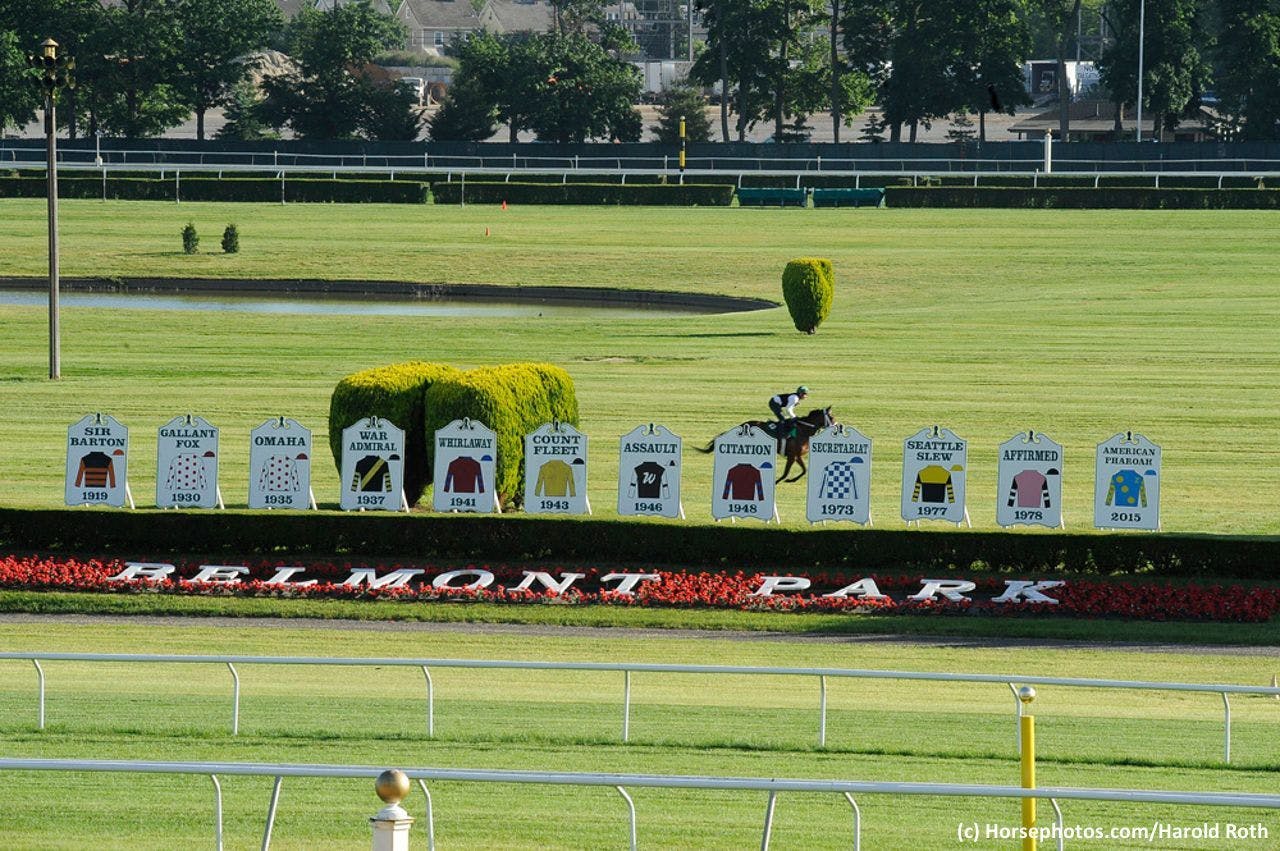Bet horses on or close to the pace instead of closers in the Belmont Stakes

(c) Horsephotos.com/Harold Roth
by Noel Michaels
A common perception in the Belmont Stakes (G1) is that closers usually benefit from the 1 1/2-mile distance in the race, but recent history has shown this not to be true. Actually, it is tactical speed and middle movers who have had the best results in the Belmont Stakes.
FREE Belmont Stakes PPs courtesy of Brisnet.com!
When handicappers consider the Belmont Stakes’ 1 1/2-mile distance, most assume that deep-closing horses who had come up short at lesser distances in the Kentucky Derby (G1) and Preakness Stakes (G1) would be at an advantage in the third leg of the Triple Crown thanks to the race’s extra real estate. This way of thinking has been a misconception for many years.
In truth, pace horses, stalkers and late runners who can middle move themselves into striking distance by the quarter-pole have a big edge over the one-run deep closers who must come from far back in the field to make up the necessary ground in the stretch.
The recent trend strongly favors horses who are able to stay close to the pace in the Belmont Stakes, or at least run in the front half of the field. Justify went gate-to-wire in 2018, Tapwrit stayed close to the front before rallying for victory in 2017 and Da’ Tara won the 2008 Belmont going wire-to-wire. The 2011 Belmont winner, Ruler On Ice, pressed Shackleford in second all the way before taking charge in the stretch. In 2010, Drosselmeyer came from midpack – not a deep closer. 2012 hero Union Rags raced in the front-half of the field throughout, laying no more than four lengths off the pace at any point in the race. Palace Malice laid close to the pace early, running fifth at the first call and fourth at the second call en route to victory in 2013. Tonalist had a similar running style in 2014, laying sixth but only three lengths back in the early stages of the race, and then pressing from third just a length behind before getting up by a head in the late stages in 2014.
When evaluating Belmont Stakes contenders based on their running styles, keep in mind that there have been many more on-or-near-the-pace winners of the Belmont than far-from-behind winners of the Belmont down through the years, and that axiom remains true today in spite of a few high-profile exceptions.
FREE Belmont Stakes Betting Guide courtesy of TwinSpires.com!
People often consider horses like Jazil, Sarava, Lemon Drop Kid and Editor’s Note to be horses who won the Belmont Stakes thanks to deep closing late runs through the stretch. A closer look at all of those winners, however, reveals something different. All four of those Belmont winners, and several other closing winners down through the history of the Belmont Stakes, had already made up the majority of their ground before the stretch run, and were already within 1 1/2-lengths of the lead at the quarter-pole on their way to victory.
True closers do win, but while deep-closing horses can win the Belmont Stakes, it happens much less often than most people think. Victory Gallop’s late rally nipped Real Quiet in the 1998 Belmont Stakes, Birdstone’s late run denied Smarty Jones a Triple Crown in 2004. Afleet Alex was more of an actual closer and was still four lengths behind the leader at the quarter-pole en route to his Belmont win in 2005. Creator was also an exception in 2016. He closed from far back and, even though he had made up the majority of his ground before the quarter-pole, he was still three lengths behind the lead turning into the stretch.
If you do decide to put your money on a closer in the Belmont Stakes, try to make sure the late runner will be able to launch his rally on the backstretch and make his way up close to the lead by the time the field reaches the quarter pole. Otherwise, bet horses who have tactical speed or who can make middle moves into contention.
Good luck!
PHOTO: Triple Crown winner memorial plaques at Belmont Park (c) Horsephotos.com/Harold Roth
ADVERTISEMENT


